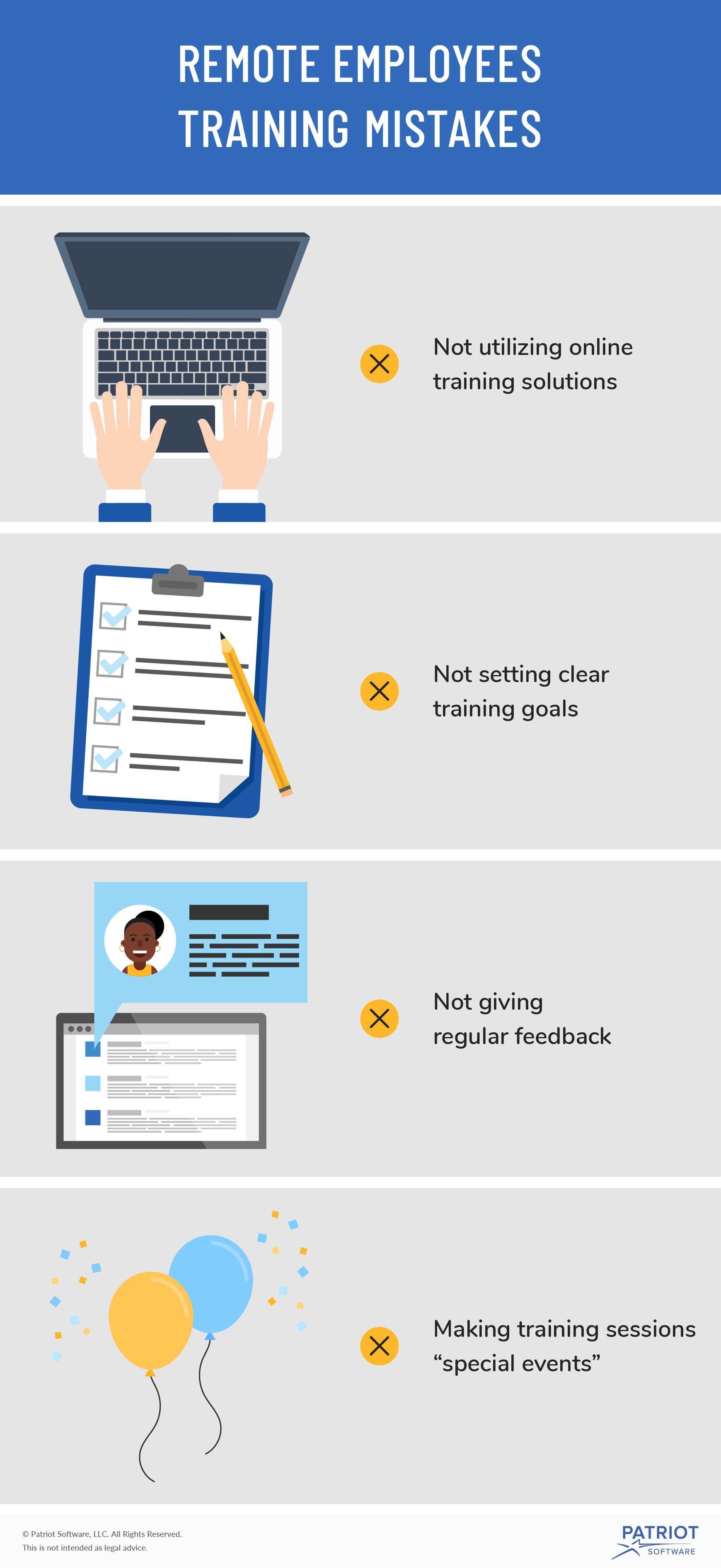More and more people are now open to remote work. In fact, a lot of them prefer working this way. A study shows that over 43% of US employees worked remotely during 2017, and the numbers show that the interest is only growing. At the same time, an increasing number of small businesses understand that offering such work can help retain talent.
Remote workers can bring many benefits to the table, including increased employee productivity, as they have no distractions and can organize their time better. They may also be more efficient because they are focusing on deliverables and not the work hours, and they can work when they are most effective.
However, as with any business model, there are also employment issues. As modern business requires constant employee improvement, so does managing remote employees. Even though it’s possible to train employees remotely, there are many mistakes made by employers when trying to improve their remote teams.
Remote employees: training mistakes
When trying to offer employee development remotely, avoid these four common training mistakes.

Not utilizing online training solutions
Face-to-face training isn’t going to cut it with remote employees. They aren’t in the office, after all, so everything needs to be done a bit differently, including training. Luckily, there are many affordable employee training software solutions that can help both the employees learn more and the employer manage and monitor the training effectively.
One of the best employee training software solutions that you can use is a learning management system. Trying to do remote training through emails, spreadsheets, or video calls is never going to get you anywhere. This will take a lot of your time and demand a lot of work, while still not giving you the results you’d like to see.
A learning management system has many features and functionalities that support different kinds of communication and learning styles. It offers specially designed tools for creating online training lessons and training content. At the same time, you can monitor the progress of each employee through it and rate their performance.
Not setting clear training goals
Employees are never going to take the training seriously unless they have clear goals in front of them. This is especially true when they are far away, learning all by themselves without anyone to guide their training. An employee who knows where the training is going will be more committed, engaged, and innovative during training.
When training remote employees, you must communicate the goals clearly and embed them into your training content. That way, your trainees can always remind themselves of what is important and what they are moving towards.
Make sure that you document the end goal of your training lesson. However, because online lessons can be divided into multiple training modules, make sure that you also discuss their goals separately and add milestones for them.
Not giving regular feedback
Even though remote workers enjoy their solitude, there is still a need for feedback. This is not only important when it comes to regular work, but it also carries a lot of value when it comes to training for employees, as workers can quickly lose the motivation to learn and finish their courses.
Include regular feedback as a part of your training lessons. With regular feedback, you can guide your employees in the right direction, tell them what they are doing well, and discuss how they can improve. This will show that you care about their training and performance. However, the feedback should go both ways.
You should also let employees give feedback. This is how you can learn about what you can improve about your training, what kind of lessons your employees like, and what concerns you can tend to.
Making training sessions “special events”
All industries are constantly evolving. This means that the technology, skills, and information required are changing as well. This is why isolated training sessions that happen a few times per year are simply not enough if you want your remote team to be up to their tasks. Remote employees especially need consistent training, as they are working alone and are devoid of any inputs from their team.
Remote employees don’t have the benefits of working in an office with colleagues where they can passively learn new things and get educated on the latest trends in their industry. Because social learning is not present, remote employees might not pursue learning on their own. This is why you need to offer training constantly.
The training should give remote workers the practical knowledge that they will be able to use instantly after finishing their learning sessions.
These views are made solely by the author.
